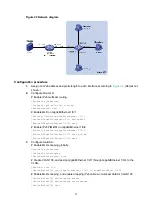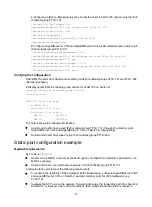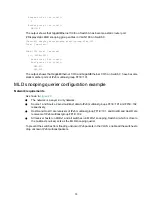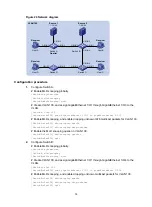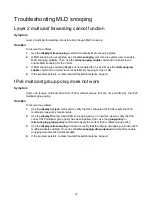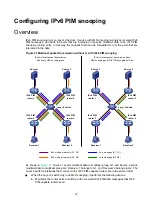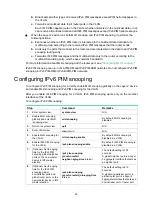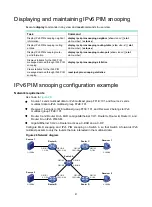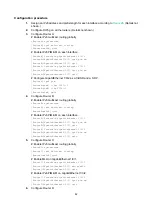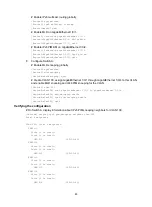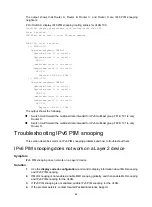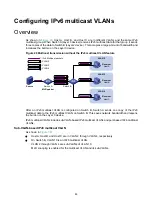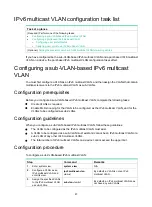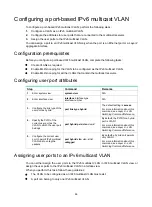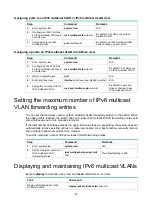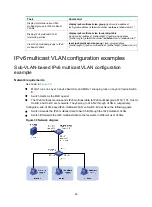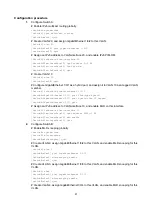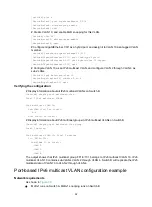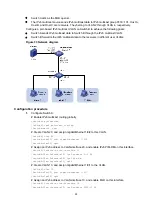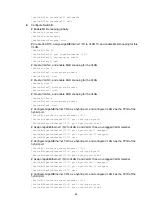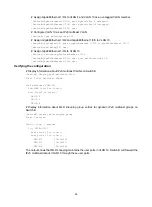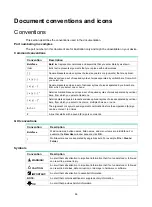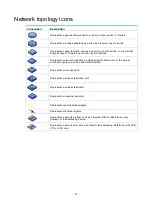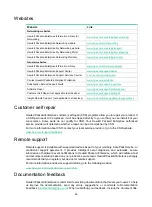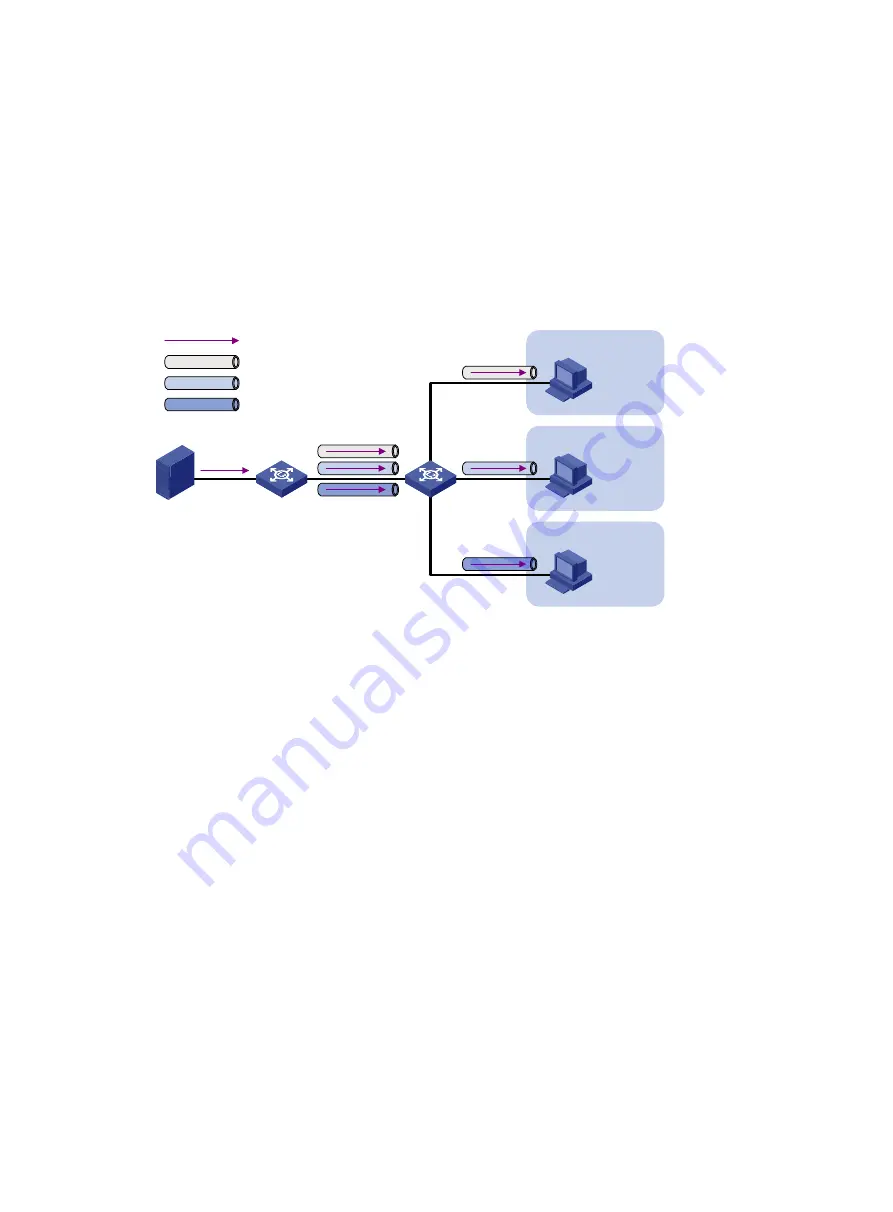
85
Configuring IPv6 multicast VLANs
Overview
As shown in
, Host A, Host B, and Host C are in different VLANs and the same IPv6
multicast group. When Switch A (Layer 3 device) receives IPv6 multicast data for that group, it sends
three copies of the data to Switch B (Layer 2 device). This occupies a large amount of bandwidth and
increases the burden on the Layer 3 device.
Figure 29 Multicast transmission without the IPv6 multicast VLAN feature
After an IPv6 multicast VLAN is configured on Switch B, Switch A sends one copy of the IPv6
multicast data to the IPv6 multicast VLAN on Switch B. This saves network bandwidth and lessens
the burden on the Layer 3 device.
IPv6 multicast VLANs include sub-VLAN-based IPv6 multicast VLANs and port-based IPv6 multicast
VLANs.
Sub-VLAN-based IPv6 multicast VLAN
As shown in
:
•
Host A, Host B, and Host C are in VLAN 2 through VLAN 4, respectively.
•
On Switch B, VLAN 10 is an IPv6 multicast VLAN.
VLAN 2 through VLAN 4 are sub-VLANs of VLAN 10.
MLD snooping is enabled for the multicast VLAN and its sub-VLANs.
Source
Receiver
Host A
IPv6 Multicast packets
VLAN 2
VLAN 3
VLAN 4
VLAN 2
VLAN 3
VLAN 4
Switch B
Receiver
Host B
Receiver
Host C
Switch A
MLD querier

